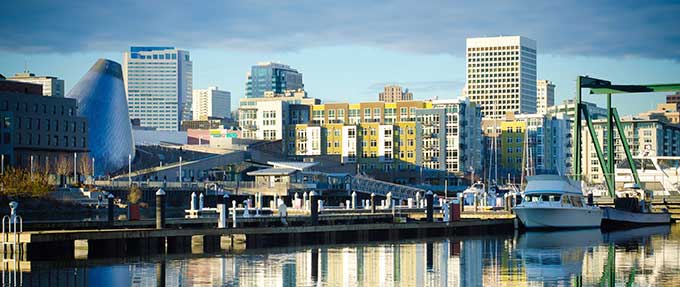You’ll never get hit with surprise charges on moving day. Our quotes are clear, fixed, and final. No hidden add-ons for stairs, heavy items, or “extra time.”
The area was inhabited for thousands of years by American Indians, predominantly the Puyallup people, who lived in settlements on the delta.
In 1852, a Swede named Nicolas Delin built a water-powered sawmill on a creek near the head of Commencement Bay, but the small settlement that grew around it was abandoned during the Indian War of 1855–56. In 1864, pioneer and postmaster Job Carr, a Civil War veteran and land speculator, built a cabin (which also served as Tacoma’s first post office; a replica was built in 2000 near the original site in “Old Town”). Carr hoped to profit from the selection of Commencement Bay as the terminus of the Transcontinental Railroad, and sold most of his claim to developer Morton M. McCarver (1807–1875), who named his project Tacoma City, derived from the indigenous name for the mountain.
Tacoma was incorporated on November 12, 1875, following its selection in 1873 as the western terminus of the Northern Pacific Railroad due to lobbying by McCarver, future mayor John Wilson Sprague, and others. However, the railroad built its depot on New Tacoma, two miles (3 km) south of the Carr–McCarver development. The two communities grew together and joined, merging on January 7, 1884. The transcontinental link was effected in 1887, and the population grew from 1,098 in 1880 to 36,006 in 1890. Rudyard Kipling visited Tacoma in 1889 and said it was “literally staggering under a boom of the boomiest”.
The Commencement Bay Land and Improvement Co. played a major role in the city’s early growth. George Francis Train was a resident for a few years in the late 19th century. In 1890, he staged a global circumnavigation starting and ending in Tacoma to promote the city. A plaque in downtown Tacoma marks the start and finish line.


